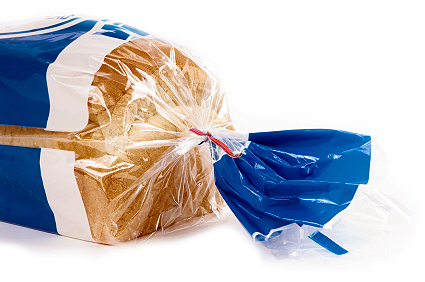 The twist tie saved sliced bread. Back in the day before
bread was sold pre-sliced, bakeries did not package bread in plastic. When
sliced bread was invented, it was the greatest thing, as the expression goes.
But the problem with pre-sliced bread is it goes stale rather quickly without
two key inventions. First, the plastic bag that kept air from getting to the
bread and kept it fresh. But a plastic bag had an opening that needed to be
closed. It was the twist tie that provided the airlock for the plastic bag.
The twist tie saved sliced bread. Back in the day before
bread was sold pre-sliced, bakeries did not package bread in plastic. When
sliced bread was invented, it was the greatest thing, as the expression goes.
But the problem with pre-sliced bread is it goes stale rather quickly without
two key inventions. First, the plastic bag that kept air from getting to the
bread and kept it fresh. But a plastic bag had an opening that needed to be
closed. It was the twist tie that provided the airlock for the plastic bag.
Little things can become very big ideas when they meet a
common need. Think of the impact that the twist tie and the plastic bag have
made on us beyond sliced bread. How bad would the stench of garbage be if the
trash bag and a twist tie had not been invented? You would be hard pressed to
find anyone who has not used a plastic bag and a twist tie in the past 24
hours. Think of the big inventions that have impacted lifestyles around us. Here
are some technology advances that we use every day.
Texting communication on a mobile
phone
The remote locking device for your
car known as the key fob
Garage door openers
Magnetic strips on credit cards
All of these have become staples for the way we live. You
could say that they have become necessities of life. Big ideas abound. They
last about as long as the next big idea, but taking care of a necessity of life
effectively has a much longer shelf life. The key to making your product or
service a staple of life relies on two things: solving a problem and creating
public demand through marketing.
Most inventions do not start out as essentials of life. They
begin as luxuries. Each of the items I mentioned above were once thought of as
items only the well-to-do could afford. Somewhere along the line, they became common
– so much so that they are now relied upon by multitudes of people. How does
this happen? Typically they solve a problem by replacing something else that
was more cumbersome and less efficient. So what did the twist tie replace?
Actually the predecessor to the plastic tie was a paper and wire tie that came
about during the 1930s to replace grass ties used in the produce section of
grocery stores. Imported grass was hard to come by and, out of necessity, a twist
tie was invented. This was improved in the 1950s and made of plastic. The
magnetic strip on the back of your credit card made it quicker to pay for an
item with just a swipe. Prior to this, credit cards had to be run through a
press device that made a copy of the raised numbers on your card on carbon
paper. It was slow and bulky. The magnetic swipe was quicker than paying with
cash. Texting replaced instant messaging. Key fobs replaced metal keys and door
locks. Garage door openers replaced human brawn. All of them made life a little
easier by solving a problem.
But solving a problem is only half of the equation. To make
a product or service a necessity in the collective mind of consumers, you have
to have effective marketing. This includes not only making people aware of it,
but also getting them to try it for the first time. That first trial is
critical to the acceptance of your product or service. One of the most
effective ways to make this happen is to define a group within your target
market who are the key influencers of opinion. For the twist tie and plastic
bag, it was mothers of young children. In the 1930s, they were the decision
makers of what bread was purchased. When a loaf of twenty-sliced bread stayed
fresh for a week with a plastic bag and a twist tie, they bought nothing else.
And they helped spread the news. Speed forward to our time. Who were the early
adopters of text messages on mobile phones? Before texting gained any business
acceptance, it was the main method of communication by teenagers. If you can
find your key influencers and focus your marketing efforts on them, convincing
them to use your product will become paramount to acceptance as an essential of
life.
___________________
Photo by kledge